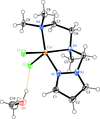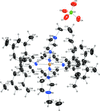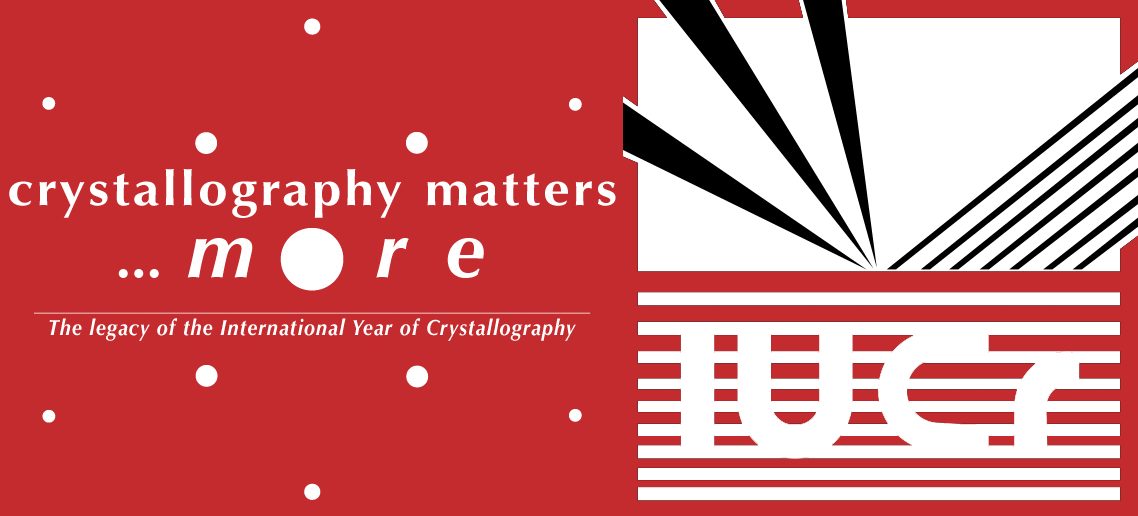issue contents
May 2019 issue

Cover illustration: 2,3-Dichloro-3',4'-dihydroxybiphenyl [systematic name: 4-(2,3-dichlorophenyl)benzene-1,2-diol] is a putative dihydroxylated metabolite of 2,3-dichlorobiphenyl (PCB 5). The dihedral angle between the least-squares planes of the two benzene rings, an important determinant of the three-dimensional structure of PCB derivatives, is 59.39 (8)°. See: Dhakal, Parkin & Lehmler [IUCrData (2019). 4, x190662].
inorganic compounds
Download citation


Download citation


Open  access
access
 access
accessLocalization of the hydrogen atoms revealed intra- and interlayer hydrogen-bonding interactions in the crystal structure of BaTeO3(H2O).
CCDC reference: 1918972
metal-organic compounds
Download citation


Download citation


Open  access
access
 access
accessThe organic–inorganic hybrid salt, [Na(C8H12BO6)]n, is made up from a bis(2-methyllactato)borate anion and a sodium cation.
CCDC reference: 1912840
Download citation


Download citation


Open  access
access
 access
accessThe structure of a new μ-carbonyl-bis{carbonyl [η5:(η6:2-methylindenyl)chromium]rhodium(III)} complex was resolved by single-crystal X-ray diffraction analysis in the P21/c space group.
CCDC reference: 1912482
Download citation


Download citation


Open  access
access
 access
accessIn the title MOF, the three-dimensional architecture is derived from the presence of a tetra-negative carboxylate ligand binding six ZnII atoms.
CCDC reference: 1915135
Download citation


Download citation


Open  access
access
 access
accessIn the title complex, the central CuII ion is five-coordinate and displays a distorted trigonal-bipyramidal geometry.
CCDC reference: 1915926
Download citation


Download citation


Open  access
access
 access
accessThe porphyrine ring system in the title ironIII complex is slightly ruffled.
CCDC reference: 1916957
organic compounds
Download citation


Download citation


Open  access
access
 access
accessIn the crystal of the title salt, the anions are linked into a chain structure via an O—H⋯O hydrogen bond formed between the carboxy and sulfonate groups. The cations bridge the anion chains via N—H⋯O and C—H⋯O hydrogen bonds, forming a sheet parallel to the ab plane.
CCDC reference: 1912046
Download citation


Download citation


Open  access
access
 access
accessThe structure of the title compound confirms the relative stereochemistry.
CCDC reference: 1913420
Download citation


Download citation


Open  access
access
 access
accessIn the title molecule, the quinolinol unit is planar. In the crystal, O—H⋯N and O—H⋯S hydrogen bonds together with π-stacking interactions form layers parallel to [100] that are associated through C—H⋯O hydrogen bonds.
CCDC reference: 1913753
Download citation


Download citation


Open  access
access
 access
accessThe title compound was obtained by mixing ethylamine and oxalic acid in water, in 1:1 molar ratio. In the crystal, the hydrogen oxalate anions are organized through hydrogen bonding into chains propagating along the c-axis direction. The surrounding cations and oxalic acid molecules are linked to the chains by N—H⋯O and O—H⋯O hydrogen bonds and N⋯O dipole–dipole contacts, leading to a supramolecular three-dimensional network.
CCDC reference: 1914197
Download citation


Download citation


Open  access
access
 access
accessThe synthesis and structures of 2-amino-5,5-dimethylthiazol-4(5H)-one is presented. The molecular packing exhibits a herringbone pattern with the zigzag running along the b-axis direction.
CCDC reference: 1913473
Download citation


Download citation


Open  access
access
 access
accessIn the crystal of the title amidoxime derivative, a short NO2⋯NO2 contact is seen.
CCDC reference: 1897722
Download citation


Download citation


Open  access
access
 access
accessThe molecular and crystal structure of 2,3-dichloro-3′,4′-dihydroxybiphenyl, a putative dihydroxylated metabolite of 2,3-dichlorobiphenyl (PCB 5), is reported.
CCDC reference: 1914945
Download citation


Download citation


Open  access
access
 access
accessThe crystal structure of 2,4,5-triamino-1,6-dihydropyrimidin-6-one sulfate monohydrate has been elucidated.
CCDC reference: 1915747
Download citation


Download citation


Open  access
access
 access
accessThe asymmetric unit of the title salt, (C12H28N)2[SO4]·3H2O, contains two n-dodecylammonium cations, one sulfate anion and three water molecules. In the crystal, N—H⋯O hydrogen bonds link the cations and anions into layers parallel to (100). These layers are further connected through O—H⋯O hydrogen-bonding interactions involving the sulfate ions and the isolated water molecules.
CCDC reference: 1900854
Download citation


Download citation


Open  access
access
 access
accessThe synthesis and structure of a tridentate pincer ligand bearing SCS donor atoms are reported.
CCDC reference: 1883165


 journal menu
journal menu



























![[publCIF]](/logos/authorchecklist11.gif)





